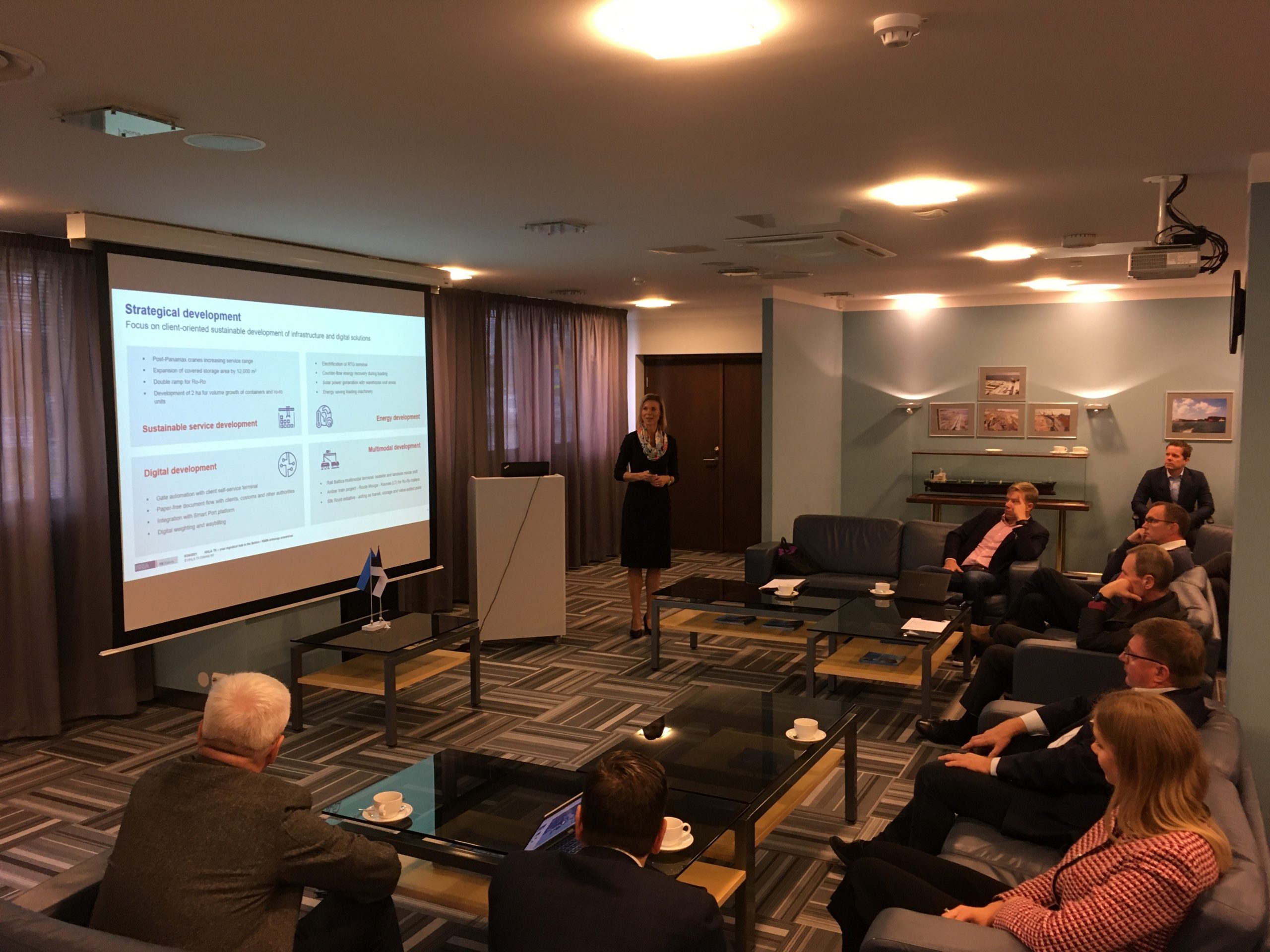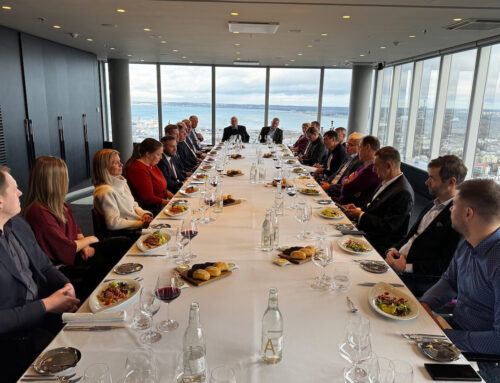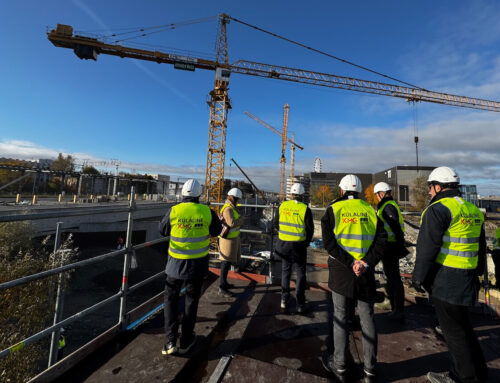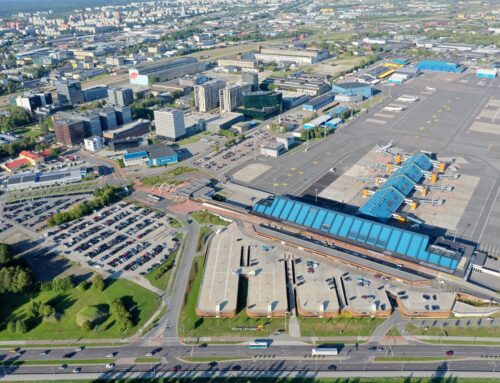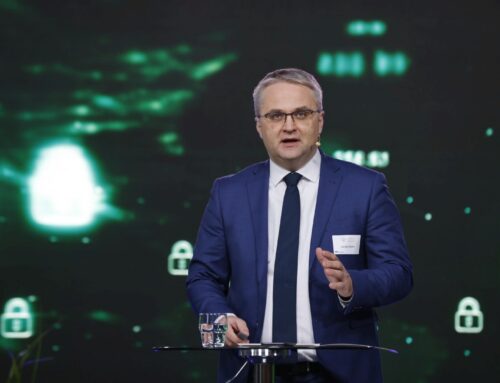This fall, members of the Estonian Rail Baltica Business Network gathered at Muuga Harbour to open the RB season and listen to presentations on current developments relating to the Rail Baltica project reaching the Muuga deepwater port area. “It was once again nice to see that companies are getting more and more interested in Rail Baltica as the project begins its construction stage and upcoming extensive changes will have a real impact on the transport and logistics sector,” said Tõnis Tamme, Board Member of Rail Baltica Business Network Estonia and Partner at TRINITI Law Firm.
Developments and plans at Muuga Harbour
Margus Vihman, Chief Commercial Officer of AS Tallinna Sadam (Port of Tallinn), highlighted restoration of the passenger business, opening of the cruise terminal with the public rooftop promenade in July and the Admiralty Bridge that opened to pedestrians and cyclists in August as the developments and development opportunities in 2021 and subsequent years. “During 2022, construction of the public square at Terminal D will be completed and we’ll begin planning an all new Terminal A,” Vihman added.
In terms of real estate related business of the Port if Tallinn, major focus will be given to the development of the Old City Harbour in order to, so to speak, bring the city to the harbour. According to Vihman, the development of industrial parks will continue at Muuga and Paldiski to enable transport and logistic companies to carry out future projects.
Rail Baltica’s freight station at Muuga will facilitate loading between maritime and road carriers and different railway gauges. “This provides means to transport 4 to 5 million tons of goods a year,” explains Vihman. The design of the RB freight station is to be completed next year and the structure itself will be ready for use in 2026.
Changes in railroad connections in Muuga area
Anvar Salomets, Chief Technical Officer of Rail Baltic Estonia OÜ, spoke about changes in railroad connections in the Muuga area. “The operators will gain immediate benefits as early as in the construction stage. The delivery point for the shipment and storage of superstructure materials will be Muuga Harbour where to rails and rail track ballast is transported by sea,” explains Salomets.
The Muuga railway junction and stations will be profoundly reorganized in relation to the arrival of the European-gauge railway (1435 mm). The designing of the railway station kicks off in the first quarter of 2022 already and the basic project will be completed in January 2023. Salomets said that the construction of the railway junction would be complete in 2026.
As a separate project, within the framework of building Rail Baltica, the port at Muuga will also handle oversized loads, heavy cargo and technically complex shipments.
Today and tomorrow in freight transport
Riia Sillave, manager of Hamburger Hafen und Logistik AG (HHLA) Muuga terminal, gave a presentation on their container terminal and on the today and tomorrow of the North-South freight transport. According to Sillave, an important advantage of the Muuga terminal lies in its location. “The draft at the quay there makes it possible to service all cargo vessels that come through the Danish straights.”
Concerning the future of freight transport, Sillave mentioned that this field as well will be affected by sustainability and environment related topics. A grand goal set for HHLA is to be climate-neutral by 2040. “To achieve this, we will reduce the back and forth movement of freight trucks, replace all of our lights with LED lights, and invest more in better technology,” Sillave brought a few examples.
In addition to these activities, the company is planning to install solar panels on the roofs of the warehouses, and the terminal will completely switch to renewable energy. “We are also exploring different ways to use hydrogen in our energy consumption,” said Sillave.
In addition to all this, there is also an important problematic issue – the current route of freight logistics, which is unsustainable. “About 36,000 freight trucks travel back and forth through the Baltic states to Finland in one month. If these trailers could be transported from the North to the South through the Baltics and Central Europe intermodally, i.e. a number of truck loads worth of cargo could be transported by rail in a single trailer or container, freight transport would become significantly more compact and climate-neutral. At the same time, this would make it possible to transport more goods than before, spending significantly less energy on it,” explained Sillave.

